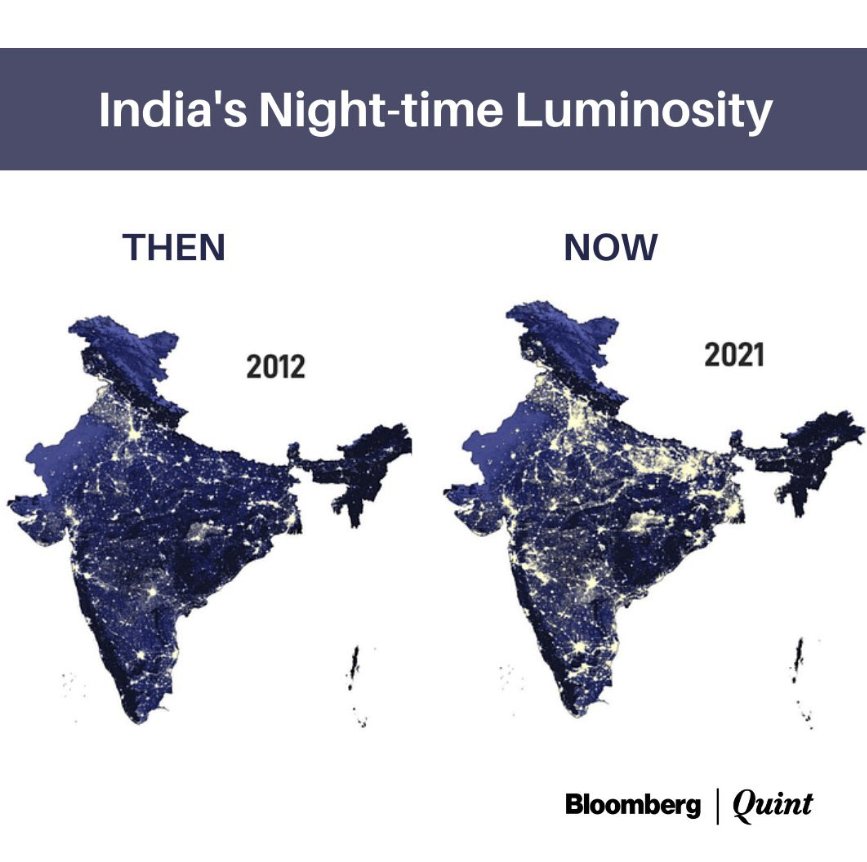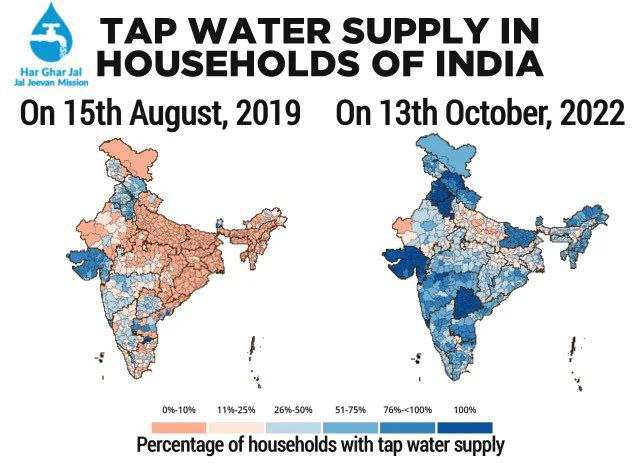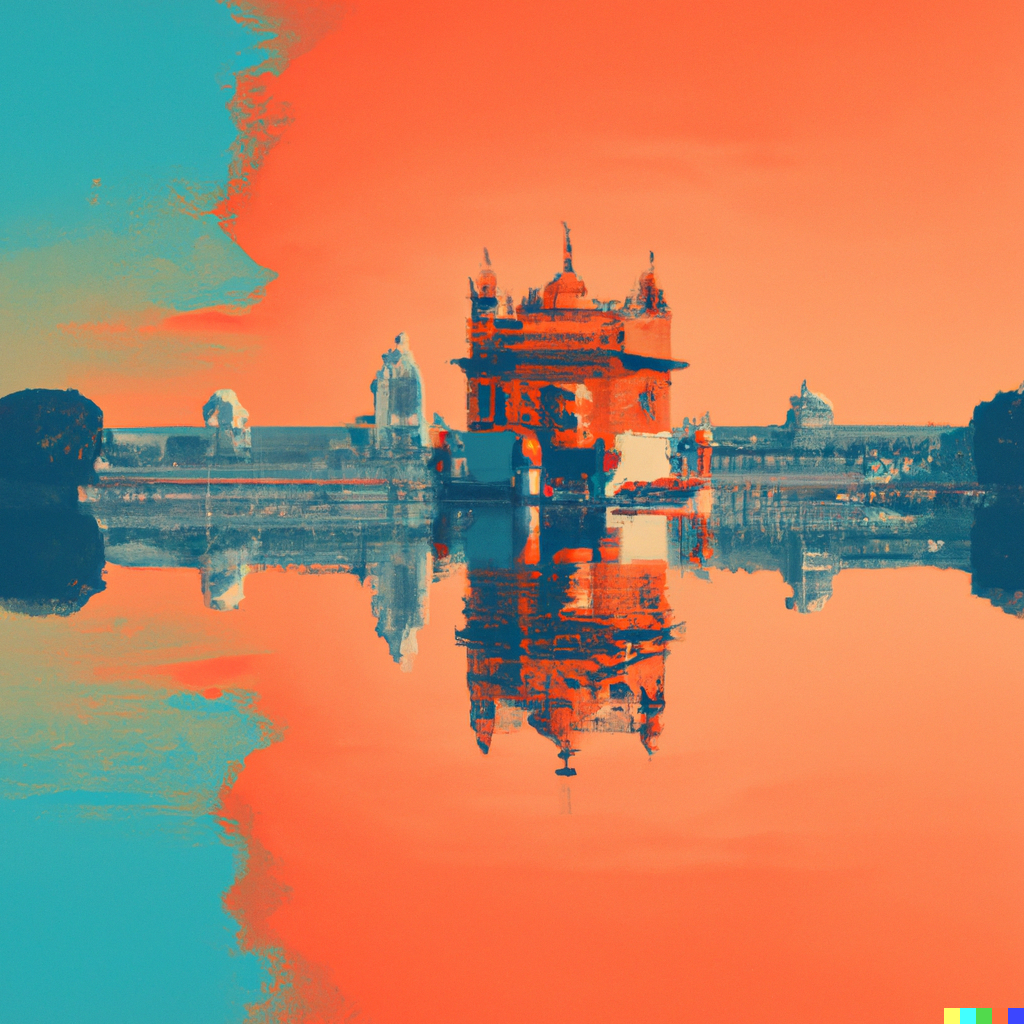India today isn't the same India as we knew it in the 90s and early 2000s. Well, that's a broad statement and can roughly apply to any country. I'd prefer to tell this story with a couple pictures, my favorite being the one that highlights India's nighttime lighting.

What can this tell us? For starters, nighttime luminosity in cities is an indicator of safety, infrastructure development, and economic vibrancy. I've never associated India with any of these things, and often hear stories from my parents—both who were born in India—about the poor quality of life for anyone not born in the 1%. Given this stark change in lighting across India over the past decade, it's easy to see why I'm excited. Some notes on these:
Brighter areas at night often correlate with regions of higher economic activity. This is grounded in the understanding that zones with a dense concentration of industries and commerce are more illuminated. Studies suggest that the connection between light and economic activity has been underestimated in rural areas—and up to 70% of India's population is housed in rural areas. That's some serious upside for India.
As urban infrastructure advances, it’s expected that cities will see an uptick in street lighting and a proliferation of commercial and residential entities, all of which amplify the city’s brightness. Well-lit areas not only act as a deterrent to criminal activity, but also instill a heightened sense of security within the community. Warmer lights have been found to generate a higher feeling of safety at the same level of illumination compared to colder lights.
In case it needs saying, economic activity, infrastructure development, and safety are very much intertwined with each other, and also with the material well-being of everyone in these areas. When people are uplifted out of poverty and have more spending power, they spend more money. They go to the movies, dress fashionably, and buy new cars. More jobs, more technological innovation, more GDP, more everything!
Coupled with urban infrastructure improvements, take a look at the massive increase in household tap water supply over just three years.

Access to water is a huge deal in the third world. In 2020, about 1 in 4 people lacked clean drinking water in their own homes. When it comes to India, aside from the health and lifestyle benefits, this will have an impact on gender equality and education. How?
In India (and most of the third world), women are made to do household chores and perform the mundane tasks. In rural areas—such as villages, like where my mom is from—it falls on women to collect water in the absence of clean household water. Access to clean water means less time spent collecting water, and more time spent on education or literally anything else more productive! And I doubt water collected from a well is free from disease. Fewer people falling ill from waterborne diseases will reduce healthcare costs for families, as well as the government. Healthier people, more spending power, and less tedious work for women. Sounds great to me.
Luminosity and clean water are force multipliers for the economy, infrastructure, education, equality, and much, much more. I'm stoked to watch India become a cultural and economic powerhouse in the coming decades. And if you haven't, you should read Noah Smith's post on India and all the reasons we should welcome their rise.

